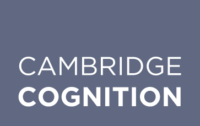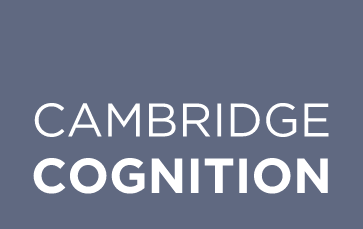
Attention Deficit Hyperactive Disorder (ADHD)
Why is cognitive assessment important in ADHD?

What is ADHD?
Attention-Deficit Hyperactivity Disorder (ADHD) is a condition that affects people’s behaviour. ADHD can cause restlessness, trouble concentrating and impulsive behaviour1. For example, children with ADHD may blurt out answers in the classroom, fidget and find it impossible to keep still and struggle to focus on what a person is saying.
ADHD is the most common neurodevelopmental disorder of childhood, affecting at least 5% of children globally. Symptoms persist into adulthood in up to 60% of childhood cases2.
For a diagnosis of ADHD to be given, the symptoms must be functionally impairing and occur in at least two distinct settings, for example at home and at school.
Considerable research has examined the long-term consequences of ADHD, highlighting its global importance for society. In a systematic review of the data, untreated ADHD was associated with poorer long-term outcomes across all categories considered: these included academic performance, job performance and employment status, self-esteem, quality of life, and risk of driving accidents3.
ADHD is a treatable neurodevelopmental disorder, with medium to large effect sizes in terms of symptomatic improvement, versus control conditions, over the short-medium term4.
ADHD is often misdiagnosed, and is frequently comorbid with other mental (and physical health) disorders. First-line treatment options for ADHD can include consideration of psychotherapy and/or medication, but these should always be offered as part of a comprehensive package of care. The most appropriate treatment options and sequencing of treatment options can vary considerably depending on factors such as the age of the individual, severity of disease, and patient/family preference.
Why it is important to do research in ADHD?
The core symptoms of ADHD are cognitive in nature (inattention, hyperactivity, and/or impulsivity). These cognitive deficits often reflect underlying brain circuitry dysfunction (including prefrontal regions) and of neurochemical transmission, including the dopamine and noradrenaline/norepinephrine pathways5-9. Our recommended test battery for attention deficit disorders assesses the cognitive domains most likely to be impaired, as well as those likely to be affected by interventions.
Sample CANTAB test battery for ADHD
We have developed the cognitive battery listed below as a starting point to aid the discussion between our clinical scientists and the sponsor’s clinical team regarding your specific study protocol, clinical population and the study goals.
Endpoints measured
Sustained attention
Working memory

Key research for CANTAB® in attention deficit disorders
The tests in this battery have detected cognitive impairment in ADHD across the age span with medium-large effect sizes, as well as detecting the effects of pharmacological interventions, for example methylphenidate and atomoxetine7.
The response inhibition test included in the battery, Stop Signal Task (SST), detects inferior frontal and anterior cingulate cortex hypoactivation in individuals with ADHD10; and drugs that show efficacy in the treatment of ADHD, such as atomoxetine, augment activation in right frontal cortical regions during this cognitive test11.
Research shows that cognitive impairment on the CANTAB® tasks significantly mediates the relationship between reduced white matter brain integrity and impaired school functioning in ADHD12.


Pathology and functional impact of ADHD
There is no singular ‘genetic cause’, but rather multiple genes are likely to confer risk or vulnerability towards developing the condition. Genes involved in the regulation of cognition and fronto-striatal brain circuitry, such as those relating to the dopamine and noradrenaline/norepinephrine neurochemical pathways are thought to be most involved4.
Current biological models for ADHD emphasise dysregulation of brain regions including the prefrontal cortex, anterior cingulate cortex, superior parietal cortex, caudate, and cerebellum5,6.
In terms of neurochemical involvement in ADHD, the dopamine and noradrenaline/norepinephrine systems have been particularly implicated, not only as a consequence of gene studies but also in terms of why certain treatments are effective but others are not8,9.
Further reading
You can find more papers about cognition and ADHD in our bibliography.Here are some other papers that might be of interest:
Shaw M., et al (2012). A systematic review and analysis of long-term outcomes in attention deficit hyperactivity disorder: effects of treatment and non-treatment. BMC Med. 2012 Sep 4;10:99.
Biederman J., et al (2005). Attention-deficit hyperactivity disorder. Lancet. 2005 Jul 16-22;366(9481):237-48.
Chamberlain S.R., et al (2011). Translational approaches to frontostriatal dysfunction in attention-deficit/hyperactivity disorder using a computerized neuropsychological battery. Biol Psychiatry. 2011 Jun 15;69(12):1192-203.
Seixas M., et al (2012). Systematic review of national and international guidelines on attention-deficit hyperactivity disorder. J Psychopharmacol. 2012 Jun;26(6):753-65.
References
- https://www.nhs.uk/conditions/attention-deficit-hyperactivity-disorder-adhd/
- Faraone SV, Biederman J. What is the prevalence of adult ADHD? Results of a population screen of 966 adults. J Atten Disord. 2005 Nov;9(2):384-91.
- Shaw M, Hodgkins P, Caci H, Young S, Kahle J, Woods AG, Arnold LE. A systematic review and analysis of long-term outcomes in attention deficit hyperactivity disorder: effects of treatment and non-treatment. BMC Med. 2012 Sep 4;10:99.
- Bolea-Alamañac B, Nutt DJ, Adamou M, Asherson P, Bazire S, Coghill D, Heal D, Müller U, Nash J, Santosh P, Sayal K, Sonuga-Barke E, Young SJ; British Association for Psychopharmacology. Evidence-based guidelines for the pharmacological management of attention deficit hyperactivity disorder: update on recommendations from the British Association for Psychopharmacology. J Psychopharmacol. 2014 Mar;28(3):179-203.
- Chamberlain SR, Robbins TW, Sahakian BJ. The neurobiology of attention-deficit/hyperactivity disorder. Biol Psychiatry. 2007 Jun 15;61(12):1317-9.
- Kasparek T, Theiner P, Filova A. Neurobiology of ADHD From Childhood to Adulthood: Findings of Imaging Methods. J Atten Disord. 2015 Nov;19(11):931-43. 2013 Oct 4.
- Chamberlain SR, Robbins TW, Winder-Rhodes S, Müller U, Sahakian BJ, Blackwell AD, Barnett JH. Translational approaches to frontostriatal dysfunction in attention-deficit/hyperactivity disorder using a computerized neuropsychological battery. Biol Psychiatry. 2011 Jun 15;69(12):1192-203.
- Brennan AR, Arnsten AF. Neuronal mechanisms underlying attention deficit hyperactivity disorder: the influence of arousal on prefrontal cortical function. Ann N Y Acad Sci. 2008;1129:236-45.
- Del Campo N, Chamberlain SR, Sahakian BJ, Robbins TW. The roles of dopamine and noradrenaline in the pathophysiology and treatment of attention-deficit/hyperactivity disorder. Biol Psychiatry. 2011 Jun 15;69(12):e145-57.
- Hart H, Radua J, Nakao T, Mataix-Cols D, Rubia K. Meta-analysis of functional magnetic resonance imaging studies of inhibition and attention in attention-deficit/hyperactivity disorder: exploring task-specific, stimulant medication, and age effects. JAMA Psychiatry. 2013 Feb;70(2):185-98.
- Del Campo N, Chamberlain SR, Sahakian BJ, Robbins TW. The roles of dopamine and noradrenaline in the pathophysiology and treatment of attention-deficit/hyperactivity disorder. Biol Psychiatry. 2011 Jun 15;69(12):e145-57.
- Gau SS, Tseng WL, Tseng WY, Wu YH, Lo YC. Association between microstructural integrity of frontostriatal tracts and school functioning: ADHD symptoms and executive function as mediators. Psychol Med. 2015 Feb;45(3):529-43.
- Gau SS, Huang W-L. Rapid visual information processing as a cognitive endophenotype of attention deficit hyperactivity disorder. Psychol Med. 2014 Jan;44(2):435-46. doi: 10.1017/S0033291713000640. Epub 2013 Apr 8.
- Biederman J, Faraone SV. Attention-deficit hyperactivity disorder. Lancet. 2005 Jul 16-22;366(9481):237-48.


